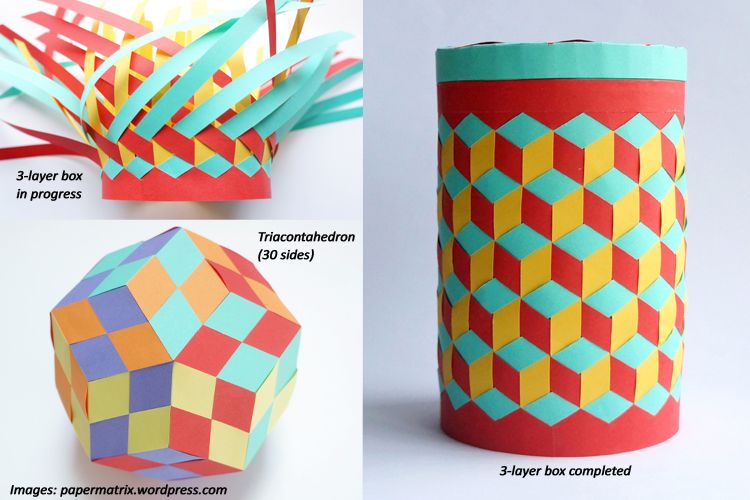We’re loving the site Papermatrix, where super-talented people show us how to weave paper strips into amazing boxes, balls, and other shapes. And these cool crafts have a ton of math in them. The tube-shaped box shown here repeats 3 diamond shapes, so they almost look like cubes in an optical illusion. If you have enough hands and eyes to track all those parts, give it a try!
Wee ones: How many colors can you count on this cube-patterned box?
Little kids: How many rows of “cubes” can you count from top to bottom on the box? Bonus: If you count 1 cube in each row and each one’s made of 3 diamond shapes, how many diamonds do they have in total?
Big kids: Each blue strip (paired with each red and yellow strip) makes 5 cubes on its way from bottom to top. If the box weaves 14 strips of each color, how many cubes do they make together? Bonus: Another project is a “triacontahedron,” meaning a 30-sided shape – that one uses 6 colors! How many different pairs of different colors can you choose from 6 colors, ignoring the order?
Answers:
Wee ones: 3 colors: yellow, red and blue.
Little kids: 5 rows. Bonus: 15 diamonds.
Big kids: 70 cubes. Bonus: 15 pairs. The 1st color has 5 to pair with; the 2nd has 4 new colors to pair with since it already paired with the first…you get 5+4+3+2+1=15. (The box then makes 2 different sides for each of those, with each color in the pointy corners vs. the wide ones.)



